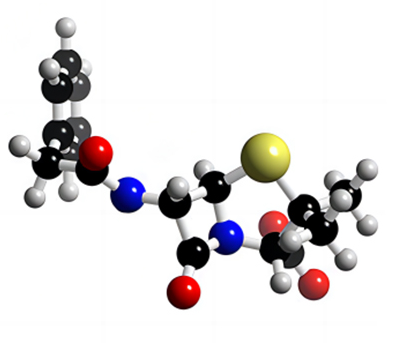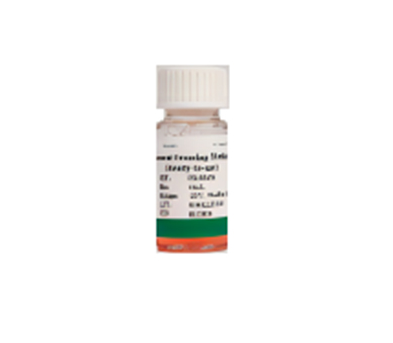Cell Culture Reagents
In order to meet the diverse experimental needs of our customers and to reduce the hassle of choosing reagents for cell experiments, after years of careful development, we offer a one-stop solution for our customers. In our cell culture reagent product library, there are cell additives such as HAT, cell dissociation reagents such as trypsin, antibiotics such as penicillin-streptomycin solution, buffers such as phosphate, cell cryopreservation solution and other related reagents. The reagents cover almost the steps of cultivation, operation and cryopeservation for general cells. All of our reagents are controlled under strict protocols and are strictly supervised by our quality team to ensure that every bottle of product delivered to our customers is qualified and stable. Pricella's cell culture reagents can make your cell culture easier once you choose.

Supplements
Supplements refer to a number of cell growth supplements that developed to make cells grow better in certain specific environments. For example, L-Alanyl-L-Glutamine is an advanced cell culture supplement that can directly replace L-Glutamine in cell culture media. L-glutamine (Glutamine) is an essential nutrient element in cell culture, but it is unstable in solution and will spontaneously degrade to generate ammonia and pyroglutamic acid, of which ammonia is harmful to cells, whereas L-alanine Acyl-L-glutamine is very stable in aqueous solution and will not spontaneously degrade. During cell culture, the cells will gradually release a peptidase into the culture medium to hydrolyze L-alanyl-L-glutamyl into L-alanine and L-glutamine, then the cells absorb and utilize the two hydrolysis products. The process of cells access to L-alanyl-L-glutamyl hydrolysis is similar to the flow-plus culture strategy, where low levels of L-glutamine are continuously added to the culture medium, thus improving the utilization of L-glutamine and not generating excess ammonia, which is more conducive to cell growth. Another example is HAT, which is commonly used for the screening of hybridoma cells and cell cultivation.

Cell Dissociation Reagents
The cell dissociation reagent is represented by trypsin. Trypsin is a serine hydrolase, which can cut the carboxyl side segment of lysine and arginine residues in the polypeptide chain, hydrolyze the protein between cells, and destroy the intercellular junctions, thereby dissociating the tissue or adnexal cells into individual cells. The activity of trypsin in dispersing cells is related to the characteristics of the tissue or cells, trypsin concentration, temperature and action time. At PH 8.0 and 37°C, trypsin has the strongest action ability. Therefore, when using trypsin, the concentration, temperature and time should be controlled to avoid cell damage due to over-dissociation. Generally, the working concentration of trypsin is 0.25%, while semi-adherent cells or cells sensitive to trypsin often use a low concentration (0.05%) of trypsin for cell dissociation. As EDTA is able to chelate Ca2+ and Mg2+, thereby disrupting cell junctions and promoting cell dissociation, a certain amount of EDTA is often added to trypsin solutions in a mixture to enhance the dissociation effect. Our company also offers various concentrations of trypsin or trypsin in different solvents for you, just to meet your various needs.

Antibiotics
Antibiotics are mainly used to prevent contamination by various bacteria, fungi and other microorganisms accidentally introduced during cell culture. For example, penicillin-streptomycin solution is the most commonly used antibiotic to prevent microbial contamination in in vitro culture. Penicillin interferes with bacterial cell wall synthesis and is particularly effective against Gram-positive bacteria, while streptomycin binds to the 30S subunit of the bacterial ribosome and inhibits bacterial protein synthesis, and is effective against both Gram-negative and Gram-positive bacteria, but is particularly effective against Gram-negative bacteria. Another example is amphotericin B, which mechanism of inhibition is that it binds to ergosterol on the fungal cell membrane, resulting in damage to the cell membrane, increased permeability, and leakage of intracellular material, disrupting normal metabolism and acting as an inhibitor, thus inhibiting the fungus. Our company provides various types of antibiotics, which can meet your preventive and control effects on adverse environments or operations.

Buffer & Salt Solution
Balanced salt solution (BSS) is mainly composed of inorganic salts and glucose and is used to maintain cell osmotic pressure, maintain pH stability and provide simple nutrition. It is mainly used for the rinsing of tissue blocks and cells and for the preparation of other reagents during sampling. In in vitro experiments, it can meet the basic survival and metabolism needs of tissues, organs, and cells.
As the essential reagents for cell laboratories, Pricella has a wide range of buffer and salt solutions, all carefully developed by the technical R&D team and verified by the rigorous cultivation of nearly 1,000 different types of cells, including 36 products such as the most commonly used PBS, DPBS, D-Hank's and Hepes. Our products are of stable quality and sufficient stock, welcome to buy online!

Cryopreservation Media
Cryopreservation Media are mainly used to freeze cells. Cryopreservation for long-term storage and resuscitation from liquid nitrogen are the most important techniques in cell culture. Our company recommends that you use our serum-free freezing medium. With the unique formulation, our freezing medium can prevent the formation of ice crystals in cells, minimize cell pressure, maintain good cell viability during cryopreservation, and effectively improve the survival rate of the cell after resuscitation. The product formula is clear and does not contain serum or animal-derived protein, which can reduce contamination risk from bacteria, viruses and mycoplasma, and ensure the safety of frozen cells.

Other Reagents
Other reagents contain cell culture-related reagents other than the above five categories, including cell room safety guards, trypan blue solution, anti-mycoplasma treatment reagents, anti-nanobacteria treatment reagents, etc.
Mycoplasma is the smallest and simplest prokaryote found so far, with a diameter of 0.1-0.3 μm. It can easily pass through the filter membrane and enter the cell culture system. Mycoplasma contamination, which is widespread and often underestimated in cell cultures, can cause many problems, such as changes in cell growth rate, cell morphology, chromosome aberrations, etc., which ultimately leads to inaccurate or incorrect experimental results. Therefore, it is of great significance to clean up mycoplasma contamination in cell culture. The anti-mycoplasma treatment reagent, contains a special component for removing mycoplasma, is a new generation of products developed by our company on the basis of Biomocin products. It is a mixed formulation that can achieve good mycoplasma removal by inhibiting the synthesis of DNA and related proteins necessary for mycoplasma growth.
This product has been tested on dozens of cells and verified in long-term experiments. It is harmless to cells and has a significant effect on the removal of mycoplasma






